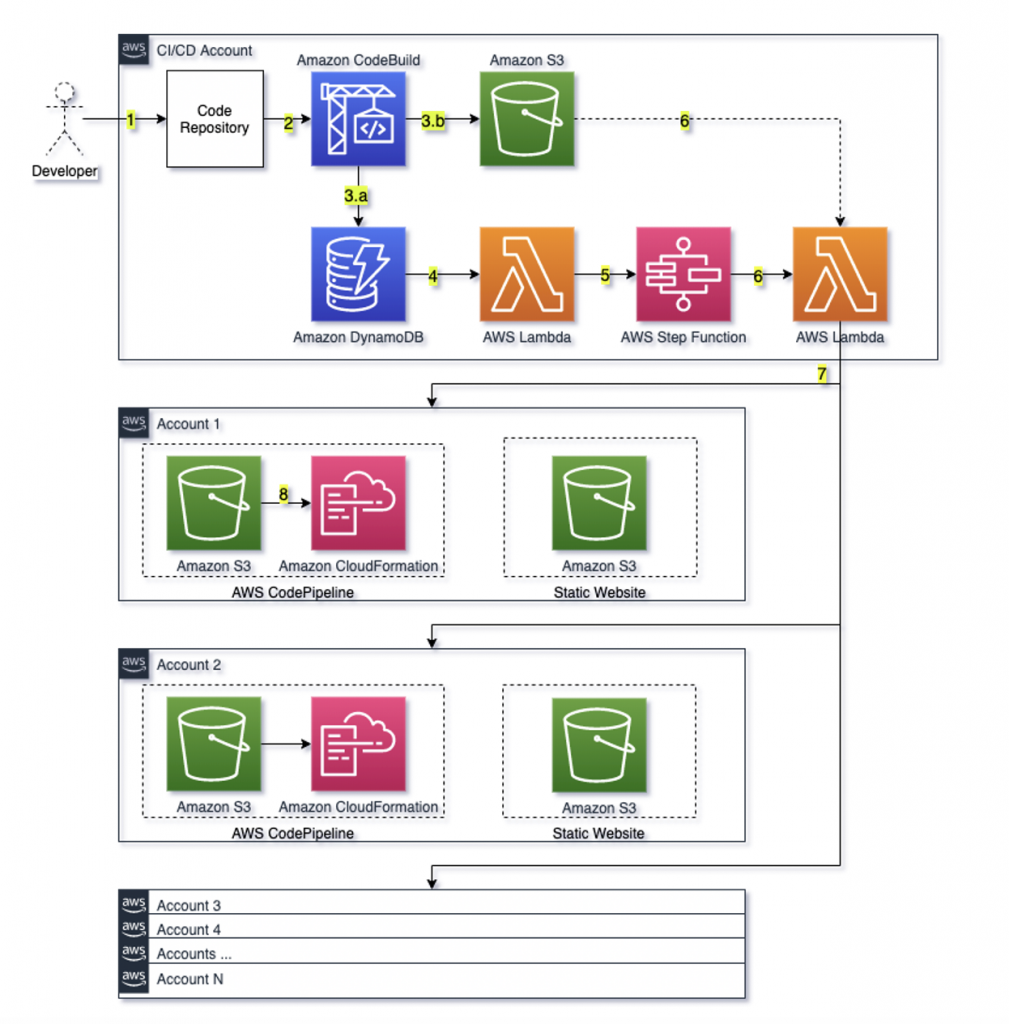AWS DevOps & Developer Productivity Blog
Integrating with Aarogya Setu Open API on AWS to ensure a safe workspace
The Indian government announced the Open API Service from Aarogya Setu (ASetu) in August, 2020. It enables organizations and business entities to fetch the COVID-19 risk status of their employees or any other ASetu app users. Most office spaces have a visitor management system that controls access or logs the identities of people entering the […]
Micro ETL pipeline: How to fetch, process, and refresh small data using AWS Lambda and AWS SAM
Whether you are building a data lake, a data analytics pipeline, or a simple data feed, you may have small volumes of data that need to be processed and refreshed regularly. This post shows how you can build and deploy a micro extract, transform, and load (ETL) pipeline to handle this requirement. In addition, you […]
How SOMA Global deploys their application with a dynamic multi-account pipeline
In April 2020, SOMA Global, a leading provider of Public Safety as a Service (PSAAS™), set out to update its computer aided design (CAD) platform to increase reliability to 99.999%, an industry first. SOMA Global adopted an account-based approach for tenant isolation to meet Criminal Justice Information Service (CJIS) regulations. The development and operations team […]
Python support GA: improving Python code quality using Amazon CodeGuru Reviewer
We are pleased to announce the GA launch of Python support in Amazon CodeGuru Reviewer, a service that helps you improve source code quality by automatically detecting hard-to-find defects. CodeGuru Reviewer is powered by program analysis and machine learning, and trained on best practices and hard-learned lessons across millions of code reviews on open-source projects […]
Best practices for developing cloud applications with AWS CDK
April 20, 2022: Updates are available in the Best practices topic of the AWS CDK documentation. The documentation is the most up-to-date resource going forward. In this post, we discuss strategies for organizing the development of complex cloud applications with large teams, using the AWS Cloud Development Kit (AWS CDK) as a central technology. AWS […]
Improving the CPU and latency performance of Amazon applications using Amazon CodeGuru Profiler
Amazon CodeGuru Profiler is a developer tool powered by machine learning (ML) that helps identify an application’s most expensive lines of code and provides intelligent recommendations to optimize it. You can identify application performance issues and troubleshoot latency and CPU utilization issues in your application. You can use CodeGuru Profiler to optimize performance for any […]
CDK Corner – March 2021
Social – Community Engagement The CDK team has started live streaming on the AWS Twitch Channel! The CDK Construction Zone is a semi regular series with members of the CDK Team diving into, and demonstrating how to build a CDK Construct. The series is dedicated to building CDK Triggers, with the code from this series […]
Serverless UI testing using Selenium, AWS Lambda, AWS Fargate, and AWS Developer Tools
Since the post Using AWS CodePipeline, AWS CodeBuild, and AWS Lambda for Serverless Automated UI Testing was published, things have evolved with Chrome headless and Firefox headless being supported natively. AWS Lambda now supports container images, AWS Step Functions has added support for Map state and its integration with Lambda, and AWS Fargate has enabled […]
Tracking the AWS CodePipeline build status from the third-party Git repository
AWS CodePipeline allows you to use a third-party Git repository as a source for a pipeline, however, the status of the build may not be available on the 3rd party git repository dashboard. As a developer, it is preferable to see the build / pipeline status in the same dashboard when working with repository. This […]
Building a serverless Jenkins environment on AWS Fargate
Jenkins is a popular open-source automation server that enables developers around the world to reliably build, test, and deploy their software. Jenkins uses a controller-agent architecture in which the controller is responsible for serving the web UI, stores the configurations and related data on disk, and delegates the jobs to the worker agents that run […]








